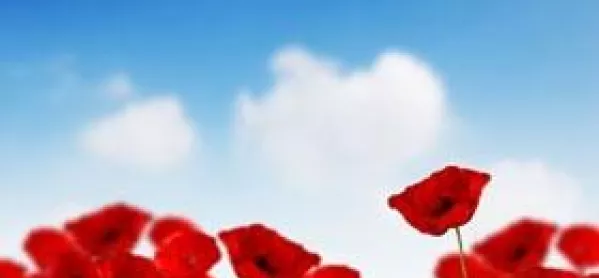Airdrie is remembered

At the Menin Gate Memorial at 8 o’clock every night in the Belgian town of Ypres, buglers from the local fire brigade close the road and play “The Last Post” in memory of those who gave their lives for their country’s freedom.
Erected in 1927, the memorial is dedicated to the many British and Commonwealth soldiers who died on the Ypres Salient in the First World War and who have no known grave.
Among these men were 17 soldiers from Airdrie and, last month during the evening ceremony, a pupil from Caldervale High stepped forward to lay a wreath at the memorial as a member of the school’s pipe band played “The Floo’ers o’ the Forest”. They were there to represent their school and to represent the town of Airdrie which lost 400 souls to the Belgian trenches.
Part of a group of some 40 Caldervale High pupils, they were making a trip to visit the Flanders battlefields, including Hill 60, and the Vimy Ridge in northern France. Among them were also pupils who had made the journey to lay wreaths at the graves of members of their own families.
This was a history project with a difference. It was about making history real - and making it personal. But it was also more than a history project. It was part of a whole-school event which culminated this week in a community commemoration, “Airdrie Remembers”, which drew 400 local people into the school assembly hall.
“It was intended very much as a community and a whole-school event, involving as many departments and pupils as possible,” says headteacher Karen Kubica.
“Over the last 20 years, our history department has organised 11 trips to the battlefields of Flanders and France, and we decided to build on this to create something which would involve the whole town and showcase the work we do in school.”
Building on a similar event last year, “Airdrie Remembers” was an evening of music, songs, poems and memories involving history, geography, music, French and English departments. Business studies students handled publicity and tickets. School technicians produced a film of the pupils’ Flanders visit. Home economics provided a “World War One Purvey” of tea, cakes and scones and art department pupils put on a display of paintings.
“The 50 pupils who actually appeared on stage were not chosen as necessarily `the best’,” says Alan Murray, head of geography.
“It wasn’t about the `best’, but about `the genuine’. It was about involving all pupils, including Skills Force students who also made the trip.”
“Airdrie Remembers” also featured a short drama set in the trenches and in the town of Airdrie where the wives await the black telegram - “Killed in Action”. The drama was scripted by John Rae, head of history, whose brainchild the project was.
“The event has been dynamic, because of the cross-curricular approach and the community involvement,” he says. “It was the local librarian who drew up the names of the 400 fatalities which included a young woman, Agnes MacDonald, an ambulance driver. From this, many pupils were able to research their own families.”
But it wasn’t just dynamic in Mr Rae’s book. It was also effective.
“It was effective in that pupils were clearly learning in a responsible way. They felt they were taking on a moral debt owed to these soldiers. Yes, it was about learning in a way envisaged in A Curriculum for Excellence. But it was about so much more than that,” he says.
All proceeds from Airdrie Remembers are donated to Erskine Homes who look after war veterans.
LAYING WREATHS IN MEMORY OF THE FALLEN
- Hollie Hunter (S3):
“My great great grandfather was Alexander Spiers Coulter, a private with the Royal Light Infantry. I knew about him, as my dad had done some family research, but I am the only person from our family to visit his grave. It was really special for me and really emotional. The graveyard was beautiful. It was peaceful. There was atmosphere there. As we stood at the grave, church bells began to ring. I’ll always remember that.”
- John Houston (S4):
“My great great uncle, Harold Duffurn, was a lance corporal with the Scottish Rifles. There was no grave for him, so I laid my wreath by the cemetery wall, where all the soldiers’ names were carved who didn’t have graves. My grandfather had told me about him and it was Mr Rae, my history teacher, who put me onto the Commonwealth War Graves Commission website where I found him. I did feel I was representing my family. The whole battlefield area made me think about what we owe to all these people.”
- Christopher Mills (S4):
“I had known about my great great uncle, Andrew Hailstone Andrew, a Royal Scots private, because my grandfather had visited his grave and he wanted me to go. I knew I also wanted to go - something about all those people who died - and I felt good in myself. I’m glad I went.”
Keep reading for just £1 per month
You've reached your limit of free articles this month. Subscribe for £1 per month for three months and get:
- Unlimited access to all Tes magazine content
- Exclusive subscriber-only stories
- Award-winning email newsletters
